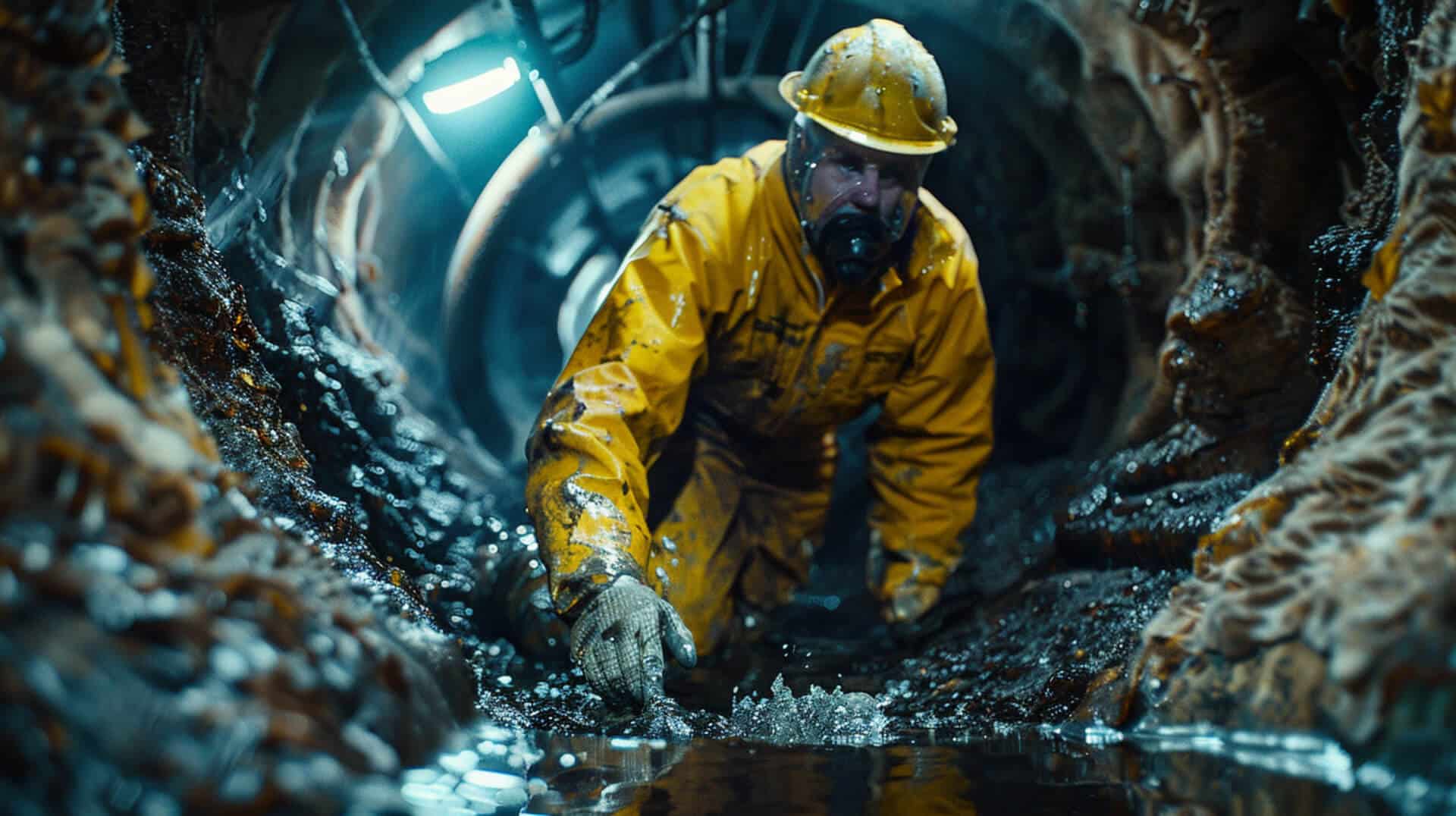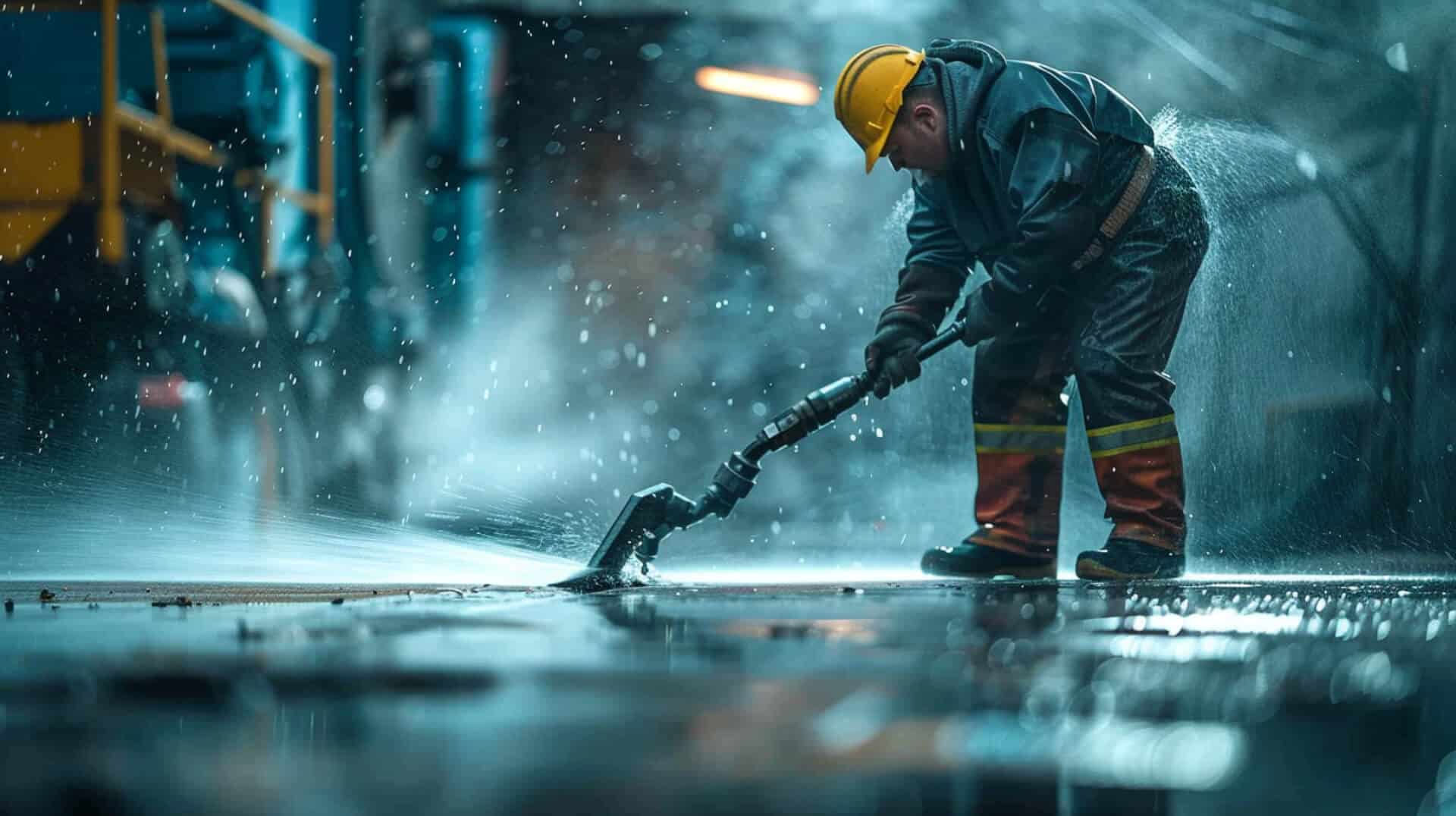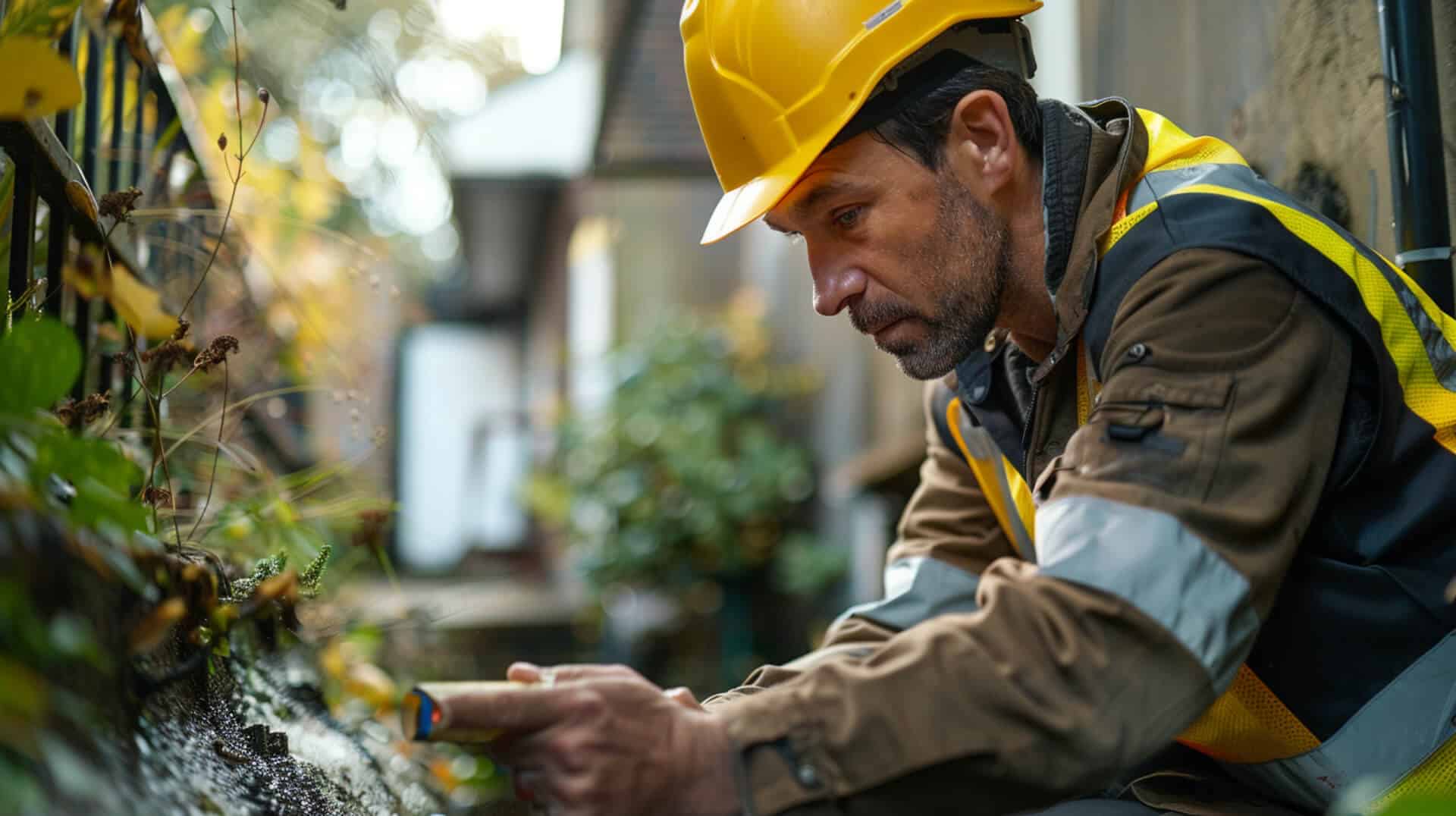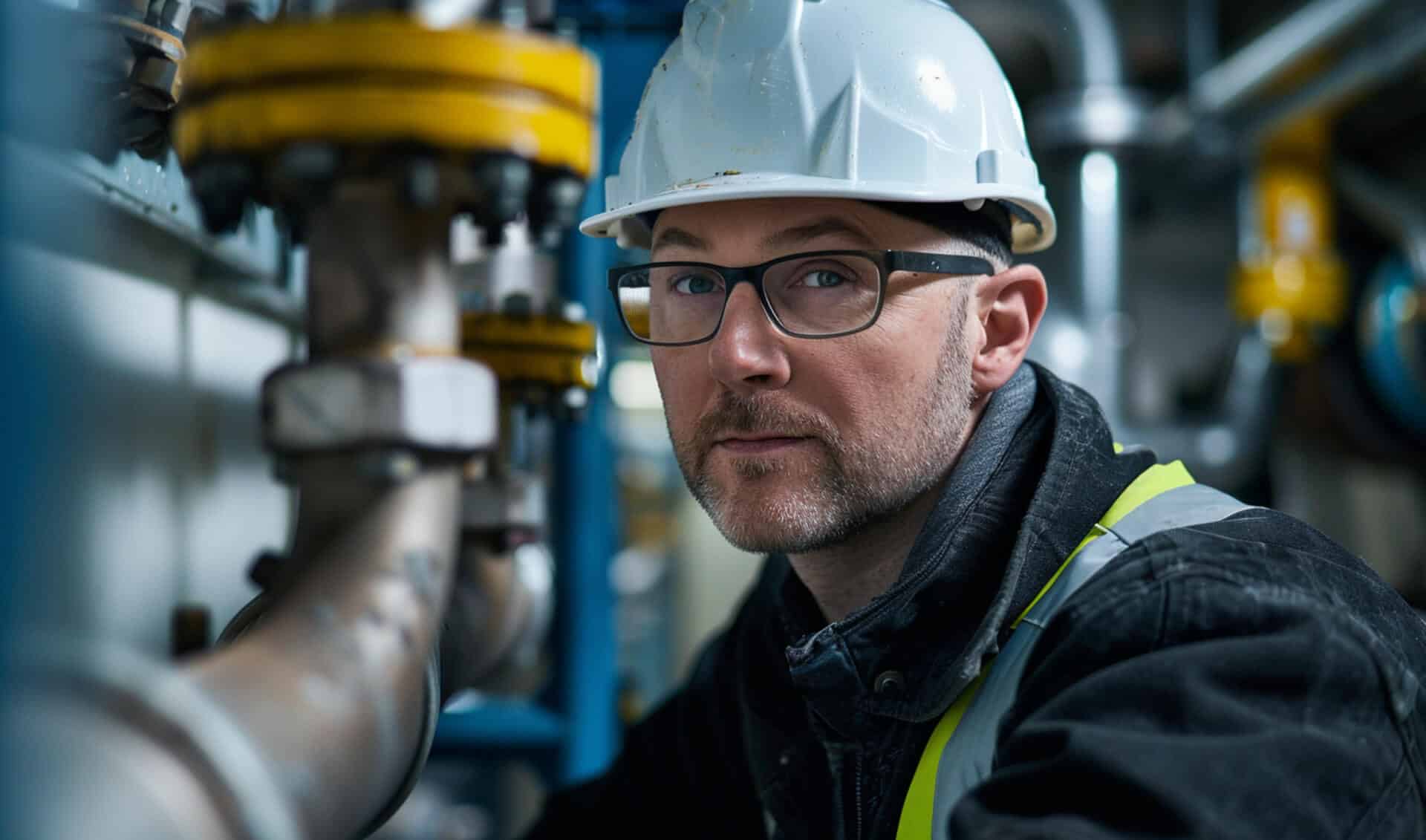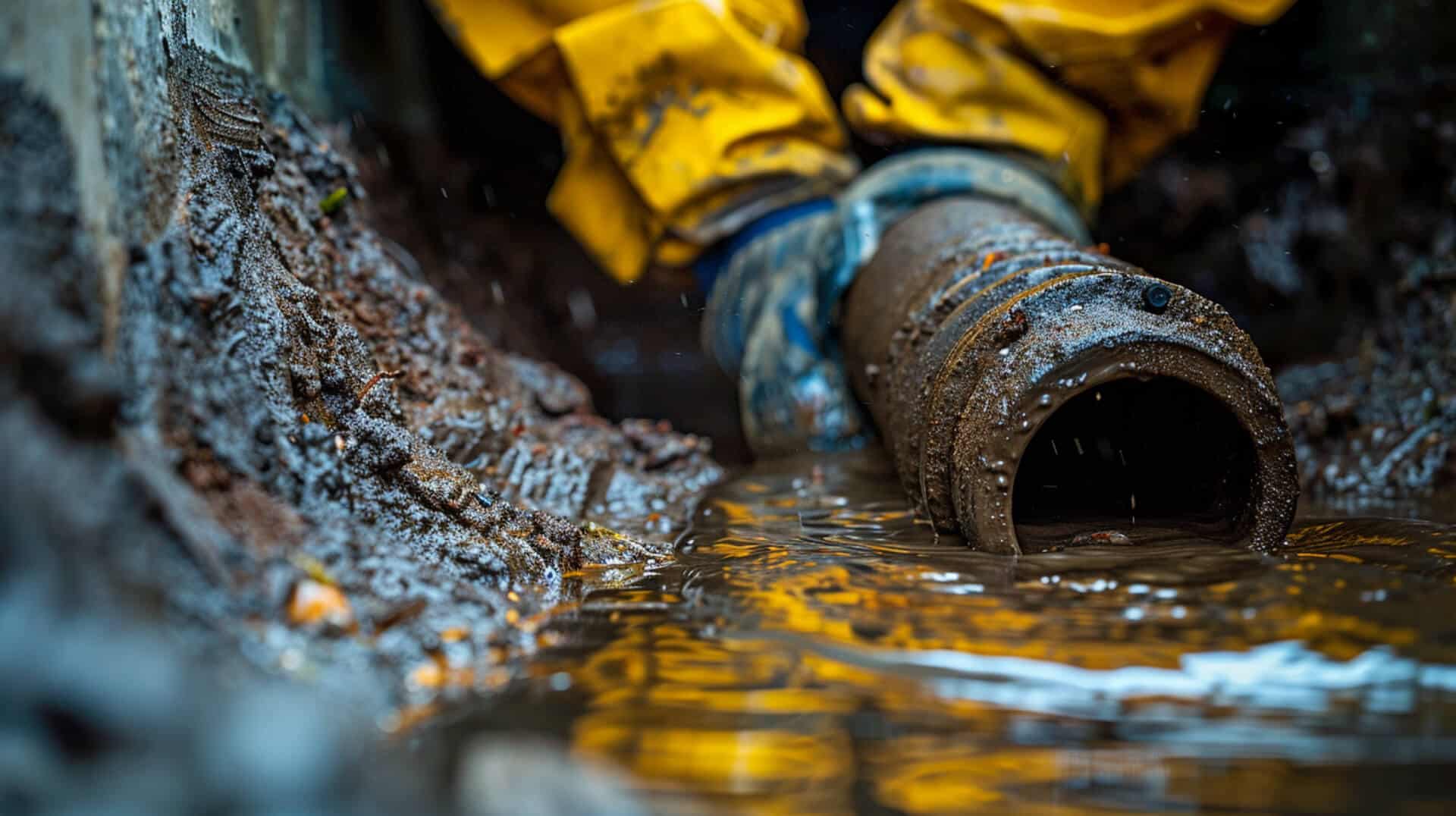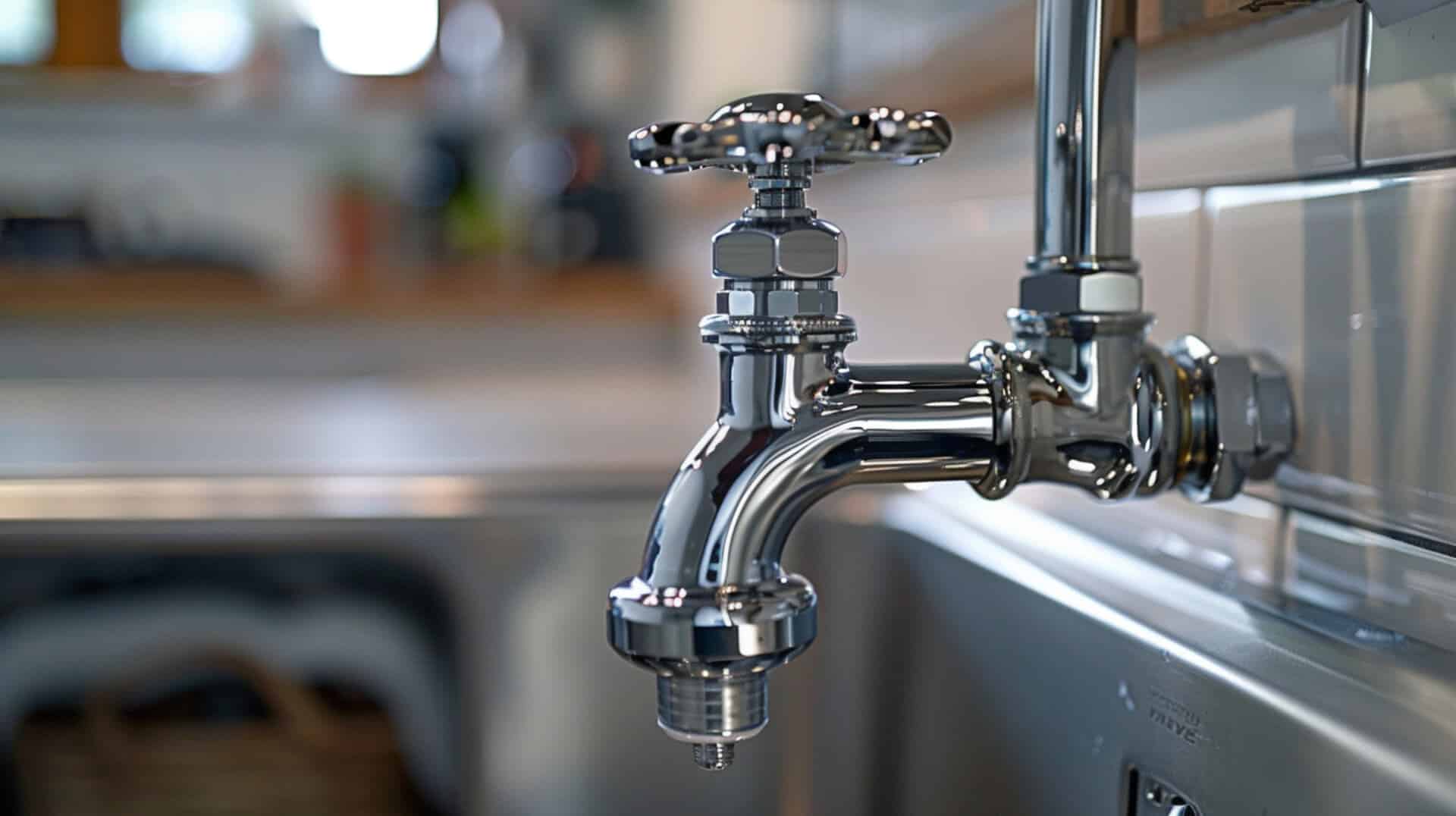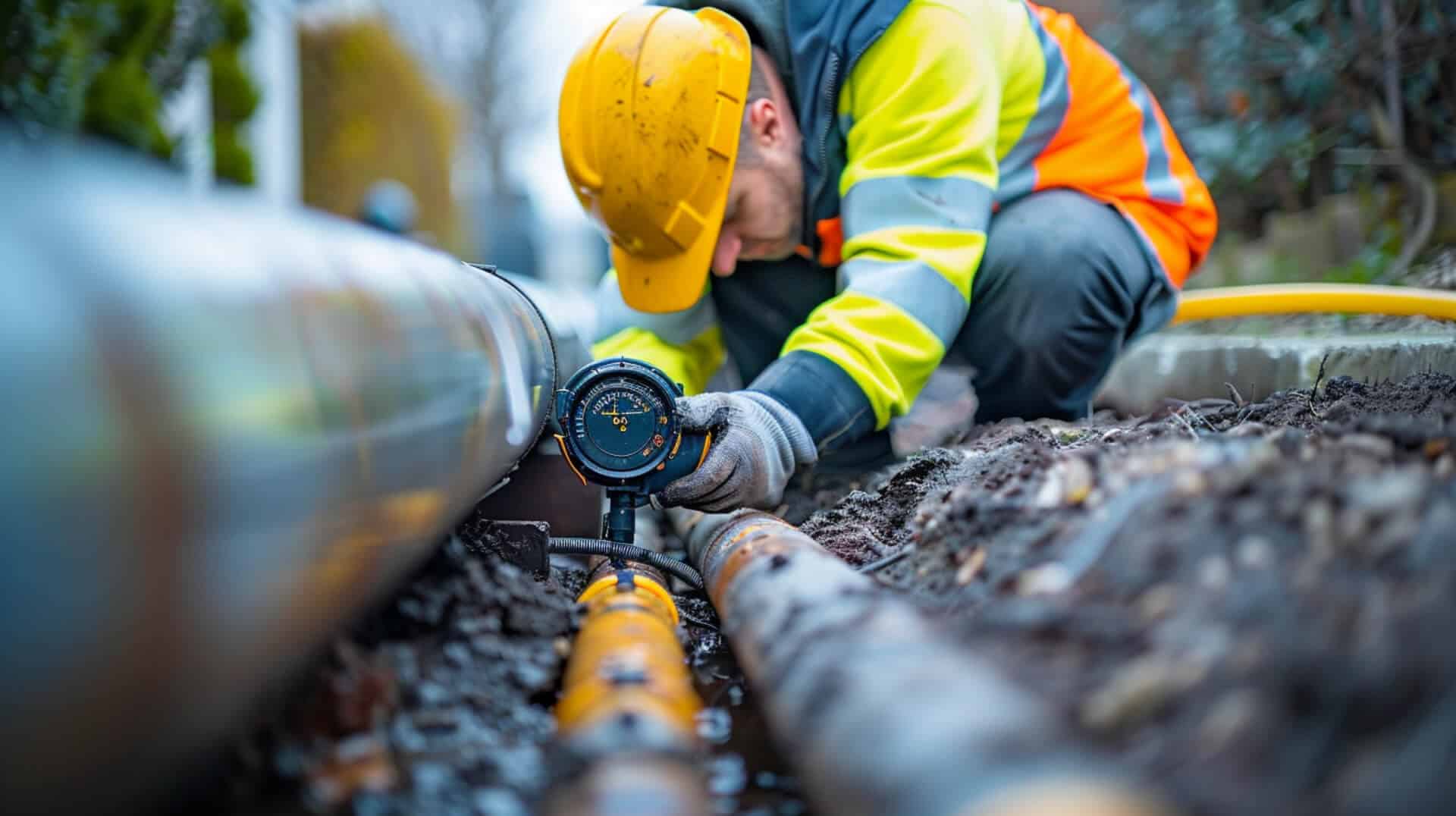 How Does Fatberg Removal Process Work
How Does Fatberg Removal Process Work

Understanding the challenges and processes involved in fatberg removal is essential for maintaining the health and efficiency of sewer systems. This guide provides an in-depth look at fatbergs, their formation, and the removal process, tailored for property owners, business owners, and facility managers.
What is a Fatberg?
A fatberg is a congealed mass found in sewer systems, composed of non-biodegradable materials and FOG (fats, oils, and grease). These blockages pose significant concerns for wastewater management due to their potential to cause sewer overflows and infrastructure damage.
Formation of Fatbergs
Fatbergs form when flushed household items like wet wipes and sanitary products combine with cooking fats, oils, and grease. These substances solidify on rough sewer surfaces, often exacerbated by turbulent fluid flow and the chemical process of saponification.
The Importance of Fatberg Removal
Removing fatbergs is crucial to prevent blockages that can lead to environmental pollution and harm marine life. The process involves specialised techniques and equipment to ensure the continued operation and safety of sewer systems.
Guide’s Objective
This guide aims to inform you about the complexities of fatberg removal. It will cover the composition, detection, and removal techniques, as well as prevention strategies to mitigate the risk of fatberg formation in your sewer systems.
Understanding the Composition of Fatbergs
Fatbergs are primarily composed of non-biodegradable materials and congealed fats, oils, and grease (FOG). These masses form in sewer systems when items that should not be flushedsuch as wet wipes, sanitary products, and cooking oilcombine with FOG that solidifies on the cooler surfaces of sewer pipes.
Common Materials in Fatbergs
The most prevalent components of fatbergs include:
- Non-biodegradable items: Wet wipes, sanitary products, and similar items that do not break down easily.
- Organic waste: Cooking oil, starchy foods, eggshells, and coffee grounds that contribute to the bulk of fatbergs.
- Chemical substances: Calcium and free fatty acids that result from the saponification process.
Contribution of Non-Biodegradable Items
Non-biodegradable items are significant contributors to fatberg formation. They provide a scaffold for FOG to adhere to and accumulate, creating a solid mass that is difficult to break down.
Role of Fats, Oils, and Grease
FOG plays a critical role in fatberg development. When disposed of improperly, these substances cool and solidify upon contact with sewer pipes, trapping non-dissolvable items and expanding the fatberg.
Importance of Understanding Fatberg Composition
Recognising the composition of fatbergs is essential for their effective removal. It informs the selection of appropriate removal techniques and the development of prevention strategies, ensuring the integrity of sewer infrastructure and environmental protection.
The Formation Process of Fatbergs
Everyday activities such as cooking and cleaning can inadvertently contribute to the formation of fatbergs. When substances like oils, grease, and non-biodegradable items are flushed into the sewer system, they can coalesce into blockages known as fatbergs.
Conditions Facilitating Fatberg Growth
Several conditions within sewer systems promote the growth of fatbergs:
- Cooling temperatures: As warm fats and oils enter the sewer and cool, they solidify.
- Rough surfaces: Sewer pipes with rough interiors allow for substances to catch and accumulate.
- Turbulent flow: The flow of water can trap solidifying fats and non-biodegradable items against pipe walls.
Impact of Saponification
Saponification, a chemical reaction between fats and alkaline substances, can exacerbate fatberg formation by converting fats into soap-like substances that adhere to sewer pipes and contribute to blockages.
Importance of Awareness for Prevention
Understanding how fatbergs form is crucial for prevention. Awareness of the consequences of improper disposal of waste can lead to better practices, such as disposing of oils and grease in the trash rather than down the drain, and can help reduce the occurrence of fatbergs.
Detection and Identification of Fatbergs
Identifying the presence of a fatberg early in sewer systems is critical for timely removal and minimising damage. There are specific signs that can alert maintenance teams to the potential presence of a fatberg.
Signs Indicating Fatberg Presence
Common indicators include:
- Unusual sewage backups: Slow drainage and backups in areas that are not prone to such issues.
- Foul odours: Persistent, unexplained bad smells emanating from drains.
- Sudden pipe blockages: Rapidly occurring clogs that are resistant to normal clearing methods.
Utilising CCTV Surveys for Detection
CCTV surveys are a primary tool for detecting fatbergs. These involve:
- Inserting cameras: Specialised cameras are fed into the sewer system to provide a visual inspection.
- Real-time assessment: Operators can identify blockages and assess their severity immediately.
- Recording footage: This allows for further analysis and planning for removal.
Challenges in the Detection Process
Detecting fatbergs can be challenging due to:
- Access issues: Some sewer sections may be difficult to reach with standard equipment.
- Visibility problems: Poor lighting and murky water can obscure the camera’s view.
The Importance of Early Detection
Early detection is essential because it allows for:
- Prompt response: Reducing the risk of severe blockages and overflows.
- Strategic planning: Ensuring the right techniques and equipment are used for removal.
- Cost savings: Minimising the potential for extensive damage and expensive repairs.
By recognising the signs and utilising technology like CCTV surveys, you can effectively identify and address fatberg issues before they escalate.
Techniques and Equipment for Fatberg Removal
The removal of fatbergs from sewer systems is a complex process that requires specialised techniques and equipment. Understanding these methods is essential for those responsible for maintaining sewer infrastructure.
Primary Methods for Fatberg Removal
Professionals employ various techniques to address fatberg blockages:
- High-pressure water jets: These are used to break down the fatberg’s structure.
- Manual excavation: Workers physically remove the fatberg material when necessary.
- Vacuumation: This method sucks out the debris from the affected sewer lines.
Functionality of High-Pressure Water Jets
High-pressure water jets serve a critical role in fatberg removal by:
- Dislodging fatberg material: The force of the water breaks apart the mass.
- Clearing blockages: The jetting action helps to restore flow within the sewer pipes.
Role of Manual Excavation
In some cases, manual excavation is required to remove fatbergs, involving:
- Physical labour: Workers use tools to break down and remove the fatberg.
- Direct removal: This method is often used when fatbergs are too solid for jetting.
Necessity of Specialised Equipment
Specialised equipment is vital for efficient fatberg removal due to:
- Size and density of fatbergs: Large, dense fatbergs cannot be removed without heavy-duty tools.
- Safety considerations: Proper equipment ensures the safety of workers during removal.
- Effectiveness: Specialised tools can more effectively restore sewer function and prevent future blockages.
By employing these techniques and utilising the appropriate equipment, you can effectively combat the challenges posed by fatbergs in sewer systems.
Challenges in Fatberg Removal
The process of removing fatbergs from sewer systems presents several challenges that can complicate and increase the cost of this necessary maintenance work.
Obstacles in the Removal Process
Professionals tasked with fatberg removal often encounter obstacles such as:
- Size and Density: Large and dense fatbergs require significant effort and heavy-duty equipment to break down.
- Accessibility: Fatbergs located in hard-to-reach areas of the sewer system can be particularly difficult to remove.
- Safety Risks: The removal process can pose health and safety risks to workers due to potential exposure to hazardous materials.
Environmental Considerations
Environmental considerations are paramount during the removal process:
- Containment: Ensuring that the removal process does not cause spillage or contamination of the surrounding environment.
- Disposal: Proper disposal of fatberg material is necessary to prevent further environmental impact.
Complexity and Cost
The complexity and potential cost of fatberg removal are influenced by:
- Labour Intensity: The manual effort required can be extensive, especially for larger fatbergs.
- Equipment and Technology: The use of specialised equipment and technology adds to the overall cost.
- Time: The time-consuming nature of the process can lead to increased labour costs and potential disruptions to sewer services.
Understanding these challenges is crucial for those responsible for sewer system maintenance, as it informs the planning and execution of effective fatberg removal strategies.
Environmental and Infrastructure Impact of Fatbergs
Fatbergs pose a significant threat to both sewer infrastructure and the environment. Understanding these impacts is crucial for stakeholders who are responsible for the maintenance and sustainability of sewer systems.
Effects on Sewer Systems and Infrastructure
Fatbergs can cause:
- Blockages: Leading to reduced capacity and efficiency of sewer systems.
- Damage: The sheer size of fatbergs can strain and damage pipes and other infrastructure.
- Maintenance Challenges: Removal often requires extensive and costly intervention.
Environmental Consequences
The formation of fatbergs can lead to:
- Pollution: Overflow events may result in the discharge of untreated sewage into the environment.
- Habitat Disruption: Marine life and ecosystems can be harmed by pollutants from sewer overflows.
- Methane Emissions: Decomposing fatbergs can release methane, a potent greenhouse gas.
Risk of Sewer Overflows
Fatbergs contribute to:
- Overflows: Blocked sewers can lead to overflows, especially during heavy rainfall.
- Sanitary Issues: Overflow events can create unsanitary conditions in public waterways.
Stakeholder Understanding
For stakeholders, understanding the impact of fatbergs is essential to:
- Inform Prevention: Knowledge of the consequences can drive better waste management practices.
- Guide Policy: Impact awareness can shape regulations and infrastructure investments.
- Community Engagement: Educating the public about the effects can foster community involvement in prevention efforts.
By comprehensively addressing the environmental and infrastructure challenges posed by fatbergs, stakeholders can develop more effective management and prevention strategies.
Prevention Strategies for Fatberg Formation
Implementing measures to prevent the formation of fatbergs is essential for maintaining sewer system health and preventing environmental damage. Property owners, business owners, and facility managers play a pivotal role in these prevention efforts.
Utilising Grease Traps and Smart Grease Traps
Grease traps are devices designed to intercept FOG before they enter the sewer system:
- Traditional Grease Traps: These units separate FOG from wastewater mechanically, requiring regular maintenance and cleaning.
- Smart Grease Traps: Equipped with sensor technology, they not only trap FOG but also monitor and manage grease levels, alerting you when cleaning is needed.
The Role of Public Education in Fatberg Prevention
Educational initiatives are critical in preventing fatbergs:
- Awareness Campaigns: Programmes like Fatberg Fighters educate the community on the importance of proper waste disposal.
- Best Practices: Informing the public about the consequences of flushing non-biodegradable items and FOG down the drain.
Long-Term Benefits of Prevention
Preventive measures offer several long-term advantages:
- Reduced Maintenance Costs: By preventing blockages, you can avoid costly repairs and clean-ups.
- Environmental Protection: Proper waste management helps preserve local waterways and ecosystems.
- Sustainable Infrastructure: Prevention strategies contribute to the longevity and efficiency of sewer systems.
By adopting these strategies, you can play a significant role in mitigating the risk of fatberg formation and ensuring the sustainability of sewer infrastructure.
Innovations in Fatberg Removal and Prevention
Technological advancements are playing a pivotal role in enhancing the efficiency and effectiveness of fatberg removal and prevention. These innovations not only streamline the process but also contribute to environmental sustainability.
Technological Advancements in Fatberg Removal
Recent innovations in the field include:
- Smart Grease Traps: These devices use sensor technology to detect and manage FOG levels, alerting maintenance teams when cleaning is required.
- Ultrasonic Treatment: Utilising high-frequency sound waves to break down fatberg components without the need for manual excavation.
- Enzymatic Degradation: The application of enzymes that specifically target and break down the fats and oils within fatbergs.
Microbe-Based Solutions for Prevention
Microbe-based solutions are a natural approach to preventing fatberg formation:
- Lipase-Producing Bacteria: These microorganisms release enzymes that break down fats into more manageable substances.
- Protease-Producing Microorganisms: They target and decompose protein-based components of fatbergs.
Potential Future Innovations
Looking ahead, potential innovations could further revolutionise fatberg management:
- AI and Robotics: The use of artificial intelligence and robotics for detection and removal could significantly reduce human involvement and risk.
- Biodegradable Materials: Development of materials that degrade more easily in sewer conditions could prevent fatberg formation from the outset.
Importance of Investment in Innovation
Investing in these technologies is crucial for:
- Cost-Effectiveness: Reducing the long-term expenses associated with fatberg removal.
- Environmental Health: Minimising the impact of fatbergs on ecosystems and water quality.
- Infrastructure Longevity: Preserving the integrity and functionality of sewer systems.
By embracing these innovative approaches, you can contribute to a more sustainable and efficient management of fatberg challenges.
Regulatory and Policy Framework Surrounding Fatbergs
The management of fatbergs is governed by a variety of regulations and policies designed to protect sewer infrastructure and the environment. These regulations are enforced by local wastewater authorities and environmental protection agencies.
Regulations Governing Fatberg Management
Regulations typically address:
- Waste Disposal: Guidelines on the proper disposal of fats, oils, and grease to prevent sewer blockages.
- Product Labelling: Requirements for labelling products as “flushable” to reduce the likelihood of non-biodegradable items entering the sewer system.
Role of Local Wastewater Authorities
Local wastewater authorities are responsible for:
- Enforcement: Ensuring compliance with regulations through inspections and monitoring.
- Education: Providing information to the public on best practices for waste disposal.
Contribution of Environmental Protection Agencies
Environmental protection agencies play a crucial role by:
- Setting Standards: Developing environmental standards that wastewater systems must meet.
- Research and Development: Supporting the development of new technologies and methods for fatberg prevention and removal.
Importance of a Strong Regulatory Framework
A robust regulatory framework is essential for:
- Preventing Blockages: Reducing the occurrence of fatbergs through effective waste management policies.
- Protecting Infrastructure: Ensuring the longevity and efficiency of sewer systems.
- Environmental Conservation: Minimising the impact of fatbergs on ecosystems and public health.
By adhering to these regulations and collaborating with authorities, you can contribute to the effective management and prevention of fatbergs.
The Role of Property, Business, and Facility Managers in Fatberg Prevention
Property, business, and facility managers hold a critical responsibility in the prevention of fatbergs. Their actions can significantly influence the health of sewer systems and the environment.
Implementing Effective Waste Disposal Practices
Managers can implement effective waste disposal practices by:
- Educating Staff: Ensuring that all employees are aware of the correct disposal methods for fats, oils, and grease.
- Maintaining Grease Traps: Regularly cleaning and servicing grease traps to prevent FOG from entering the sewer system.
- Monitoring Waste: Keeping a close eye on the types of waste produced and disposed of by their facilities.
Benefits of Grease Management Systems
Grease management systems offer several benefits:
- Preventing Blockages: They are essential in intercepting FOG before they enter and clog sewer lines.
- Reducing Costs: By preventing fatbergs, businesses can avoid expensive remediation and potential fines.
- Ensuring Compliance: Adhering to local regulations helps maintain good standing with wastewater authorities.
Importance of Collaboration with Authorities
Collaboration between managers and authorities is important to:
- Share Best Practices: Learning from regulatory bodies about the most effective prevention strategies.
- Stay Informed: Keeping up-to-date with the latest regulations and technologies in fatberg prevention.
- Community Engagement: Working together to educate the public and promote wider community involvement in fatberg prevention efforts.
By taking these steps, you can play a pivotal role in safeguarding sewer systems against the formation of fatbergs.
Key Takeaways for Managing and Preventing Fatbergs
The management and prevention of fatbergs are critical for maintaining the health of sewer systems and protecting the environment. Key takeaways include the importance of proper waste disposal, regular maintenance, and the use of innovative technologies.
Collaborative Efforts in Addressing Fatberg Issues
Stakeholders, including property owners, business owners, facility managers, and local authorities, must work together to effectively address the challenges posed by fatbergs. This collaboration can lead to:
- Shared Best Practices: Exchanging knowledge on effective fatberg prevention and removal techniques.
- Community Involvement: Engaging the public through educational programmes to raise awareness about the impact of fatbergs.
Future Steps for Sustainable Fatberg Management
Sustainable management of fatbergs requires:
- Continued Innovation: Investing in research and development of new technologies for fatberg detection, removal, and prevention.
- Policy Development: Establishing and enforcing regulations that discourage improper waste disposal practices.
The Role of Education and Innovation
Ongoing education and innovation are crucial for the long-term success of fatberg management strategies. They ensure that:
- Best Practices Evolve: As new information and technologies become available, best practices should be updated and disseminated.
- Public Awareness Grows: Continuous education initiatives help maintain public awareness and encourage responsible waste disposal behaviours.
By focusing on these areas, stakeholders can contribute to a future where fatbergs are less of a threat to sewer systems and the environment.
